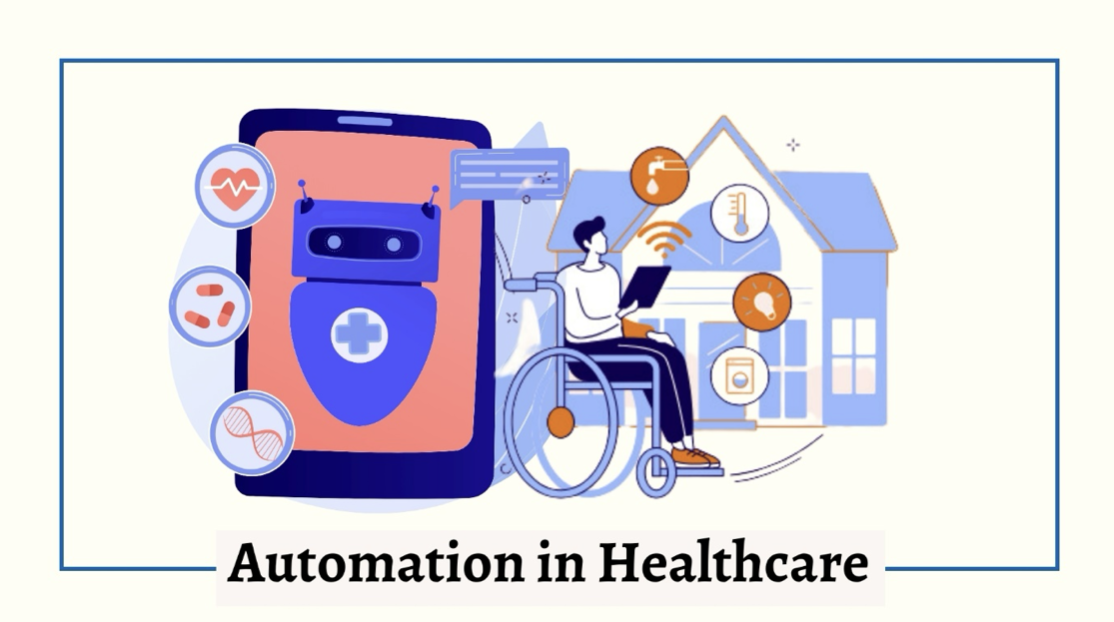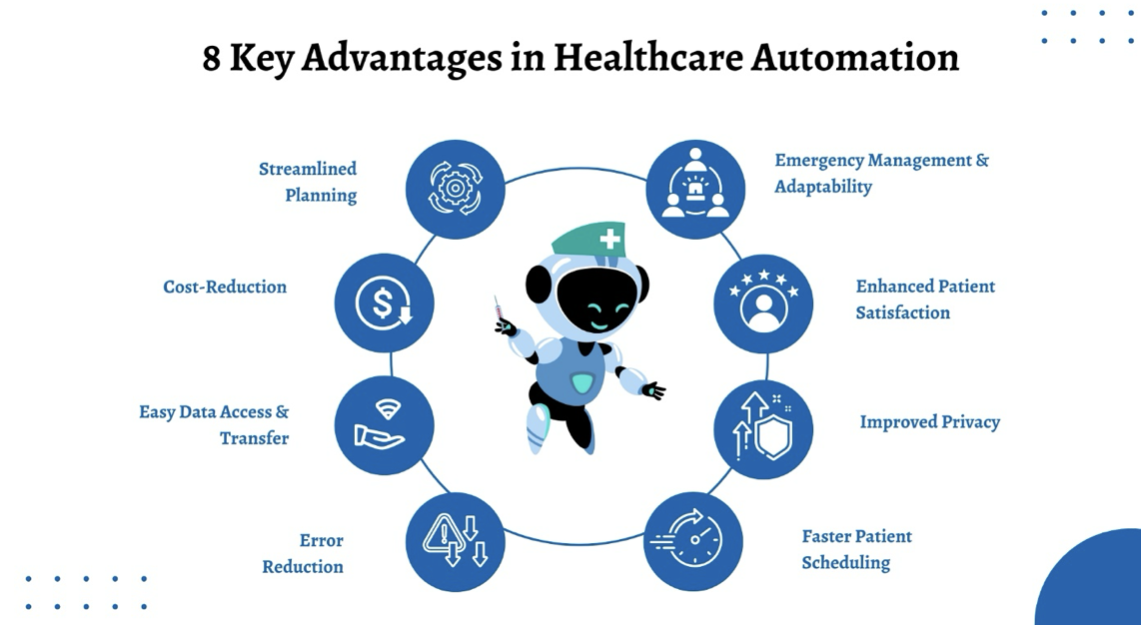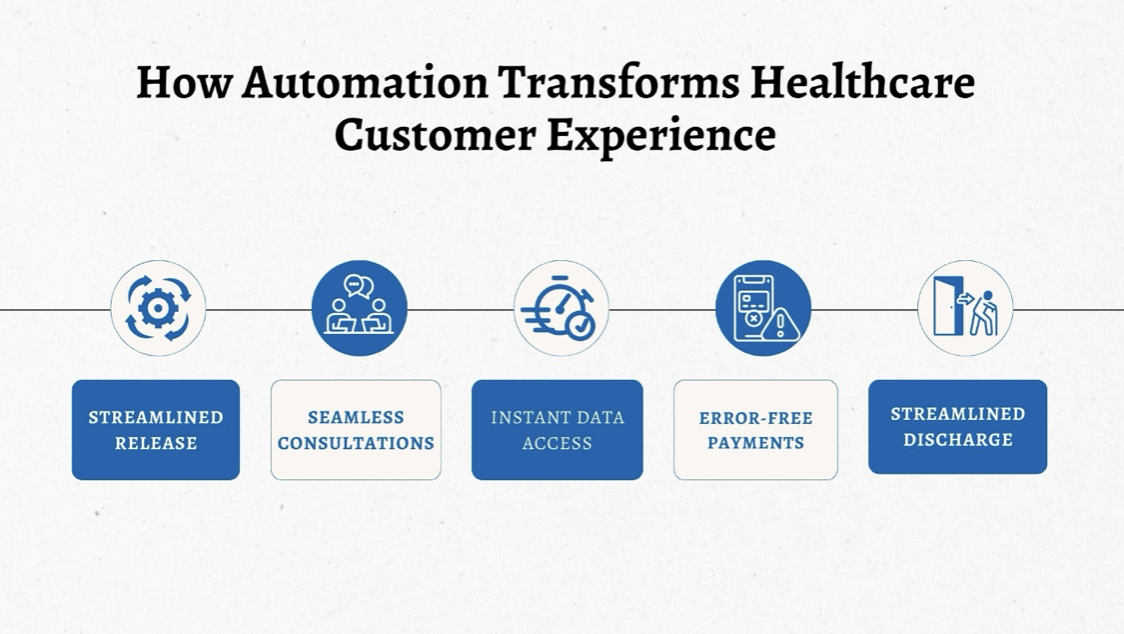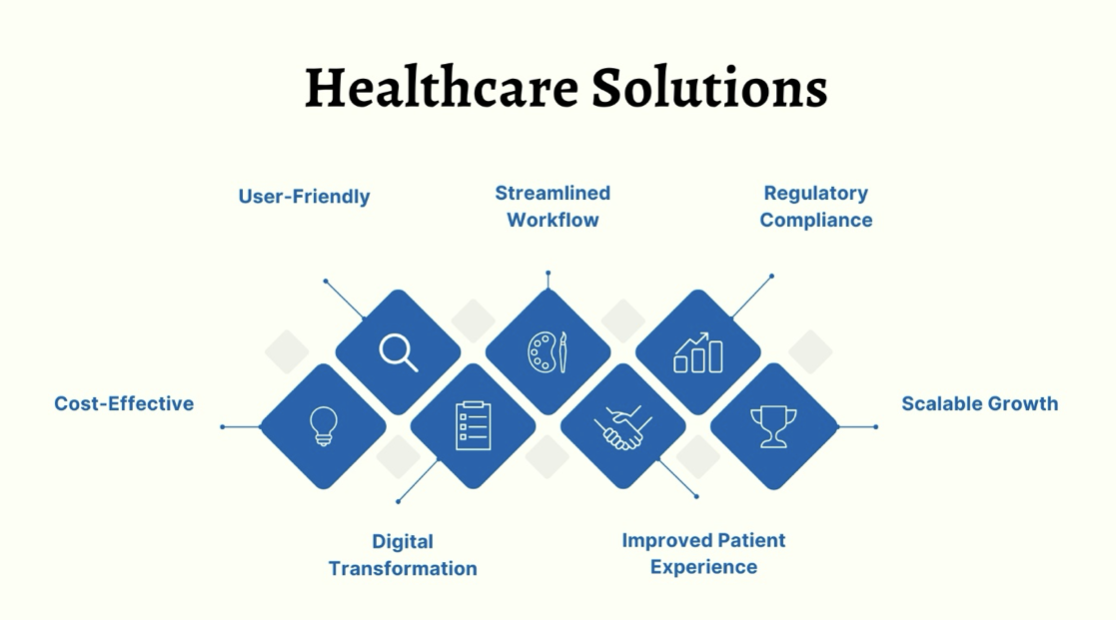
Automation is revolutionizing various industries, and healthcare is no exception. Despite its potential, the healthcare sector has lagged in adopting automation compared to other industries. This delay is primarily due to misconceptions about automation and a lack of focus on automating crucial tasks.
Automation drives technological advancements and enhances process efficiency, ultimately improving patient outcomes. A common example of healthcare automation today is sending text reminders to patients about upcoming appointments. Additionally, automation can leverage databases to alert medical professionals about known drug interactions and contraindications, ensuring safer patient care.
Embracing automation in healthcare can lead to significant improvements in efficiency and patient safety. As the industry continues to evolve, overcoming these initial hurdles will be key to unlocking the full potential of automation in healthcare.
8 Transformative Benefits of Automation in Healthcare
Automation is revolutionizing healthcare, achieving efficiencies impossible through manual operations. By alleviating staff from routine tasks, healthcare providers can focus more on patient care. Here are eight specific benefits of automation in healthcare:

Streamlined Appointment Scheduling
Manually scheduling appointments is fraught with challenges, including potential conflicts and complex rules to match the right patient with the correct provider and location. Automation simplifies this process, making appointment scheduling and cancellations more efficient. To ensure effective management of your clinic’s needs, it’s crucial to integrate scheduling software with your EHR/PM platform. This integration sets the rules for scheduling, facilitating a seamless process for both patients and schedulers.
By optimizing these aspects, healthcare organizations can enhance patient experience and operational efficiency. Embracing automation in healthcare not only improves service delivery but also allows healthcare professionals to dedicate more time to patient-centric activities.
Maximizing Efficiency and Reducing Costs
Healthcare executives are increasingly turning to automation solutions to reduce operational costs. By implementing strategies such as reducing overtime, enhancing productivity, and minimizing errors, automation enables practitioners to accomplish more within their regular shifts. This not only lowers overall stress levels but also reduces the need for overtime work. Furthermore, by allowing professionals to focus more on patient care, automation helps decrease medical errors, leading to significant cost savings.
Simplified Data Access and Transfer
Many healthcare facilities are adopting automated systems for patient data access and transfer. Once patient data is collected, these systems automatically upload it to a centralized database, facilitating seamless data exchange with other facilities and departments. This automation addresses a major challenge in the healthcare sector: the timely exchange of patient information. When a patient’s diagnosis or treatment involves multiple departments, automated data transfers help eliminate bottlenecks, improving the overall treatment workflow. Additionally, connecting all devices in a facility to a single network reduces administrative costs and saves valuable time.
Reducing Errors with Automation
Automation significantly reduces the risk of human error in both clinical and administrative processes. By improving the reliability of tools used for patient diagnosis and treatment, as well as administrative tasks, automation leads to more effective therapies and smoother operations. Data sharing across multiple systems provides a comprehensive understanding of processes, enabling administrators to optimize scheduling and reduce wait times for surgeries and appointments. The increased dependability of automated systems allows healthcare institutions to serve a larger patient base efficiently and assist patients in finding alternative treatment facilities more swiftly.
Managing Emergencies and Adapting to Change
Machine learning (ML) is revolutionizing healthcare by enabling organizations to adjust staffing levels dynamically in response to sudden changes in patient load, especially in emergency departments. This advanced automation not only helps reduce wait times for ambulatory care but also improves overall patient care efficiency. By analyzing historical data from various sources, healthcare providers can more accurately predict staffing needs, particularly during high-demand periods like flu season.
In the wake of the COVID-19 pandemic, automation has become crucial in quickly adapting to new social distancing guidelines and occupancy limits. Automated messaging systems are another example, streamlining communication between staff and patients and helping healthcare institutions manage regulatory changes and emergency situations effectively.
The global healthcare automation market was valued at USD 35.2 billion in 2022 and is expected to reach USD 90.88 billion by 2032, growing at a compound annual growth rate (CAGR) of 10.00% from 2023 to 2032. This growth underscores the increasing reliance on automation and machine learning to enhance healthcare operations and patient outcomes.
Improving Patient Satisfaction
Patient satisfaction is significantly influenced by the quality of care received at healthcare facilities. Ensuring a seamless experience in scheduling, checking in, and completing visits is crucial for maintaining high satisfaction levels. The total time required for appointments, including wait times on the day of the appointment and the time it takes to secure an appointment, is also a key factor in patient satisfaction.
Healthcare organizations can boost patient happiness and overall experience by automating various healthcare activities. For example, implementing software that sends text reminders to patients for rescheduling missed appointments can streamline the process and improve satisfaction.
Ensuring Better Privacy
Protecting patients’ Personally Identifiable Information (PII) and Protected Health Information (PHI) is paramount for healthcare businesses. Adherence to HIPAA standards is essential for safeguarding this sensitive information. Case management automation solutions play a vital role in HIPAA compliance by defining usage rights. This feature ensures that PHI is accessible only to authorized individuals, enhancing privacy and security for patients.
By leveraging automation in healthcare, organizations can significantly enhance patient satisfaction and ensure better privacy, leading to a more efficient and secure healthcare system.
Efficient Online Appointment Scheduling
Automated scheduling systems, significantly enhance the ease and speed of booking medical appointments. Unlike the traditional method of calling the office, patients can now self-schedule appointments online at their convenience, 24/7, using any internet-connected device.
These systems offer customizable filters, helping patients find the most suitable providers effortlessly. By allowing patients to book their own appointments, practices can maintain the same automated workflows and procedures used by schedulers, ensuring control over the scheduling process and guaranteeing the correct provider and appointment type are selected.
The Rise of On-Demand Medical Care

Telehealth has rapidly gained popularity, with 50% of patients in the United States having used virtual appointments at the start of the pandemic and 71% considering telehealth services. The telehealth market is projected to grow over seven times by 2025, making it crucial for healthcare providers to meet this increasing demand.
Healthcare workflow automation systems are well-equipped to handle these needs. Simple automated processes can significantly enhance the quality of patient-centered healthcare, ensuring a seamless and efficient experience for both patients and providers.
Smoother Consultation Experience
When scheduling an appointment with a new healthcare provider, patients often face the daunting task of completing extensive documentation detailing their medical history and visit purpose. This repetitive process can lead to frustration for both patients and medical staff, wasting valuable time. Administrative tasks like these contribute significantly to healthcare costs, accounting for nearly 30% of expenses.

By implementing a well-designed automated workflow, patients can complete preliminary intake forms and submit them directly to their electronic health record (EHR). This system ensures that the right information reaches the right people at the right time, according to regulations, without the need for duplication. This not only enhances the patient experience but also improves efficiency within the healthcare facility.
Data at Your Fingertips
Instant access to a wealth of data empowers healthcare professionals to make informed decisions, significantly improving patient care. One major stressor for healthcare professionals is the potential for unexpected surges in admissions. With real-time data at their disposal, healthcare teams can anticipate and prepare for these situations, determining staffing needs accurately and effectively.
Accurate data also enables healthcare organizations to identify and implement preventive strategies, reducing the workload in clinics and emergency rooms. While many healthcare providers are aware of their busiest periods, having precise information is crucial for optimizing staffing requirements.
Key Benefits
- Improved Patient Experience: Automating intake forms reduces repetitive tasks, making the consultation process smoother and less time-consuming.
- Enhanced Efficiency: Streamlined workflows ensure that essential information is accessible to the right individuals, reducing administrative burdens.
- Informed Decision-Making: Access to real-time data allows healthcare professionals to plan staffing and resources more effectively, improving patient care and reducing stress.
- Preventive Strategies: Data-driven insights help in identifying trends and implementing measures to reduce patient inflow during peak times, easing the burden on healthcare facilities.
Embrace automation and data-driven decision-making to transform the consultation experience and optimize healthcare delivery. Implementing these strategies can lead to significant improvements in patient satisfaction and operational efficiency.
Enhance Your Healthcare Business with Error-Free Payment Processing
Processing payments remains one of the most time-consuming and crucial tasks in healthcare businesses. For healthcare teams, managing insurance claims can be especially labor-intensive, often riddled with errors. With the increase in virtual visits, the potential for payment processing errors has also risen significantly.
In the US, around 25% of healthcare expenses are billed to insurance companies. These tasks are repetitive and predictable, making them ideal for automation. By leveraging automation, healthcare providers can reduce claim processing turnaround time by 75-85%, transforming a previously costly process into an efficient one.
Streamlined Patient Discharge
Process automation can significantly enhance the quality of healthcare by establishing precise routines and follow-up procedures for recently discharged patients. After their medical sessions, patients often forget or are unsure about the next steps. To prevent future issues, healthcare providers can set up automated workflows to handle all post-visit requirements. This includes scheduling follow-up appointments, planning regular check-in messages, and sending appointment reminders, ensuring a seamless transition and continuous care for patients.
Enhance your healthcare operations with automation and witness a remarkable improvement in efficiency and patient satisfaction.
Will Automation in Healthcare Create a Scarcity of Jobs?
The rise of automation in healthcare often sparks concerns about potential job losses. However, automation can actually enhance the workforce by allowing employees to focus on more clinically significant tasks rather than administrative duties that fall outside their expertise. In an industry already facing chronic understaffing, automation does not mean fewer jobs. On the contrary, studies consistently show that fully automated systems increase employee satisfaction.
A critical component of implementing automation in healthcare is comprehensive staff training. This training should encompass the new technology and explain how it will enhance both patient care and staff workflows. Proper training ensures that employees adapt quickly to their new roles and responsibilities.
Are you ready to embrace Healthcare Technology?

Are you ready to revolutionize the healthcare industry with cutting-edge technology solutions? O2 Technologies is your trusted partner in driving innovation and excellence in healthcare. Our comprehensive range of services, from advanced data analytics to seamless integration of health IT systems, ensures that you stay ahead of the curve. With a proven track record and a commitment to delivering top-notch solutions, O2 Technologies empowers healthcare providers to enhance patient care, optimize operations, and achieve digital transformation.
Don’t wait! Elevate your healthcare technology landscape with O2 Technologies today. Contact us to learn more about how we can help you achieve your goals and lead the way in healthcare innovation.
